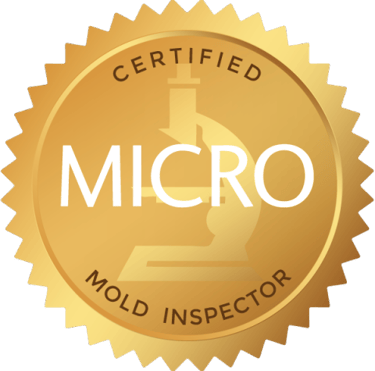Effective Steps to Reduce Mold for Better Air Quality
Is mold making you sneeze, wheeze, or worse? Discover easy, actionable steps to clear the air in your home! In this post, we detail immediate strategies to tackle mold, from simple humidity hacks to effective cleaning routines. Learn how to improve your indoor environment with minimal effort for maximum allergy and asthma relief. Click to breathe easier and live healthier!


Understanding Mold and Its Impact on Health
Mold is a type of fungus that plays a crucial role in the decomposition of organic materials in the environment. However, when mold grows indoors, it can lead to a variety of health concerns, particularly for susceptible individuals, such as those with allergies or asthma. Mold spores thrive in damp and poorly ventilated areas, making places like basements, bathrooms, and kitchens prime locations for mold development. Common types of indoor mold include Aspergillus, Cladosporium, and Stachybotrys, often referred to as black mold.
The health implications of mold exposure can be significant. Individuals with existing respiratory conditions may experience heightened symptoms when exposed to mold spores. The inhalation of these spores can lead to irritating symptoms such as sneezing, coughing, and nasal congestion. Moreover, mold exposure can aggravate asthma, leading to increased difficulty in breathing, wheezing, and shortness of breath. In some cases, it may even trigger asthma attacks in individuals who previously had well-managed symptoms.
Furthermore, mold particles can also influence the immune system, causing allergic reactions in sensitive individuals. Common signs of mold allergies include itchy eyes, skin rashes, and headaches. Additionally, prolonged exposure to mold may lead to more severe respiratory issues, particularly in young children, the elderly, and those with compromised immune systems. Recognizing the impact of mold on health is essential for taking steps towards a healthier indoor environment.
In summary, the presence of mold in indoor settings poses various health risks, especially for those with respiratory conditions and allergies. Understanding how mold thrives and impacts health highlights the importance of controlling its growth to improve overall air quality and promote well-being for all occupants in the space.
Controlling Humidity Levels in Your Home
Maintaining optimal humidity levels is crucial for preventing mold growth and enhancing indoor air quality. Mold thrives in environments where moisture levels exceed 60%. Ideally, indoor humidity should be kept between 30% and 50%. Regular monitoring is essential, and homeowners can utilize hygrometers to measure humidity levels accurately.
One of the most effective strategies for controlling humidity is the use of dehumidifiers. These devices draw excess moisture from the air, making them particularly beneficial in areas prone to dampness, such as basements and bathrooms. To maximize their effectiveness, place them in areas where humidity is often higher, and ensure they are regularly emptied and cleaned. It is also advisable to use exhaust fans in bathrooms and kitchens to enhance ventilation during activities that produce moisture, such as showering or cooking. These fans should be run during and for at least 30 minutes after such activities to help reduce indoor humidity.
In addition to mechanical solutions, being mindful of indoor plant placement can further assist in controlling humidity levels. While plants can improve air quality, too many can contribute to increased moisture. Limiting the number of plants or opting for species that require less water can be beneficial in maintaining desired humidity levels.
Furthermore, during wet seasons, sealing cracks and gaps around windows and doors can prevent external moisture from entering your home. Maintaining a clean and dry environment, particularly in areas prone to leaks, will also contribute to lower humidity levels. By taking these practical steps, homeowners can effectively manage humidity levels, which can subsequently relieve allergy and asthma symptoms and promote a healthier living space.
Effective Cleaning Strategies to Minimize Mold
Mold can significantly impact indoor air quality, making it essential to implement effective cleaning strategies to minimize its growth in the home. A proactive approach to cleaning can not only eradicate existing mold but also prevent future outbreaks. To achieve this, it is important to focus on areas commonly affected by moisture, such as bathrooms, basements, and air conditioning systems.
One effective method of reducing mold presence involves the use of mold-killing cleaners. Many commercial cleaners are specifically formulated to eliminate mold spores and prevent their regrowth. When choosing a cleaner, look for labels that contain fungicidal properties, ensuring they are suitable for various surfaces. Regularly incorporating these products into your cleaning routine can greatly reduce the likelihood of mold developing in key areas.
In addition to chemical cleaners, natural remedies such as vinegar and baking soda can serve as invaluable tools in the fight against mold. Vinegar, a powerful natural disinfectant, can be sprayed directly onto mold-affected surfaces and left to dry, allowing it to work effectively. Similarly, baking soda can be mixed with water to create a paste that not only tackles existing mold but also absorbs excess moisture, thereby deterring future mold growth.
Establishing a routine cleaning checklist is also crucial. Key routines could include regularly cleaning shower walls and curtains, washing bathroom rugs, and wiping down mold-prone surfaces such as window sills and ceiling corners. Additionally, maintaining clean air conditioning systems can prevent mold spores from circulating in the air. It is advisable to replace or clean filters as needed and schedule routine maintenance checks to ensure optimal functioning.
Adopting these cleaning strategies will not only help reduce mold but also improve overall indoor air quality, creating a healthier living environment for all household members.
Enhancing Ventilation to Improve Airflow
Proper ventilation is an essential factor in managing indoor air quality and controlling mold growth. Inadequate airflow can lead to the accumulation of moisture, which is a key contributor to mold proliferation. Homeowners can take several straightforward steps to enhance ventilation and, in turn, mitigate the risk of mold formation.
One of the simplest methods to improve airflow is by regularly opening windows. This allows fresh outdoor air to circulate and replace stale, humid air inside the home. It is particularly beneficial to do this during dry days when outdoor humidity levels are lower, thus helping to reduce indoor moisture. Furthermore, utilizing exhaust fans in areas prone to humidity, such as kitchens and bathrooms, helps expel moist air from these spaces. Ensuring these fans are operational during and after activities that generate humidity, such as cooking or showering, can significantly decrease the chances of mold establishment.
Arranging furniture thoughtfully is another effective strategy to promote air circulation. Positioning furniture away from walls and ensuring that vents are unobstructed allows air to flow more freely throughout the room. Additionally, implementing a cross-ventilation system can be highly beneficial. This can be achieved by opening windows or doors on opposite sides of a room or home, creating a pathway for air to move through. Such practices not only decrease moisture accumulation but also enhance overall air quality.
By increasing ventilation and airflow, residents can help diminish the likelihood of mold exposure, which is particularly crucial for those suffering from allergies or asthma. Improved ventilation is a proactive approach to fostering a healthier indoor environment and can lead to long-term benefits in air quality, making a significant impact on the well-being of all occupants.
TUNE MY SPACE LLC
Afton , Virginia 22920
support@tunemyspace.com




